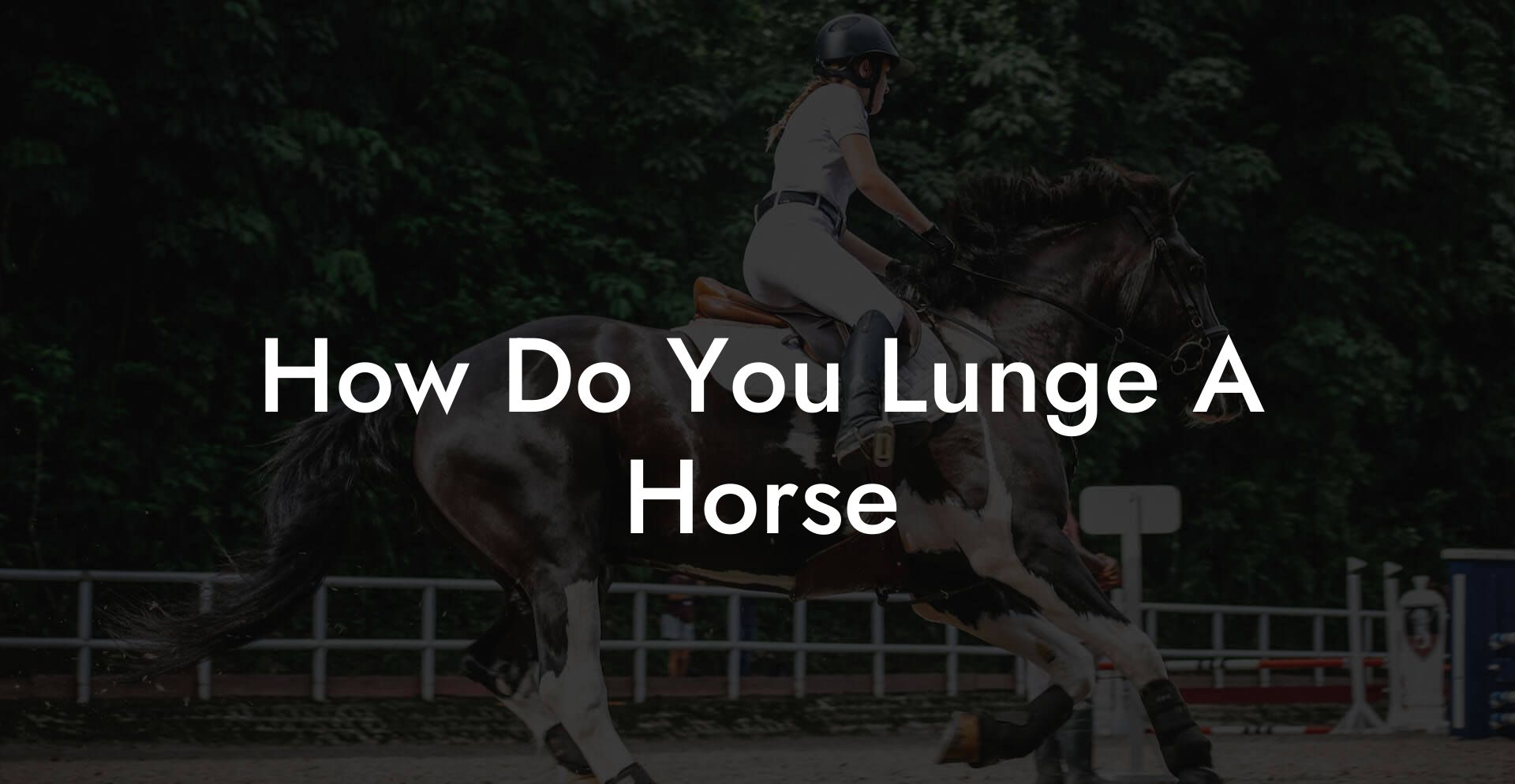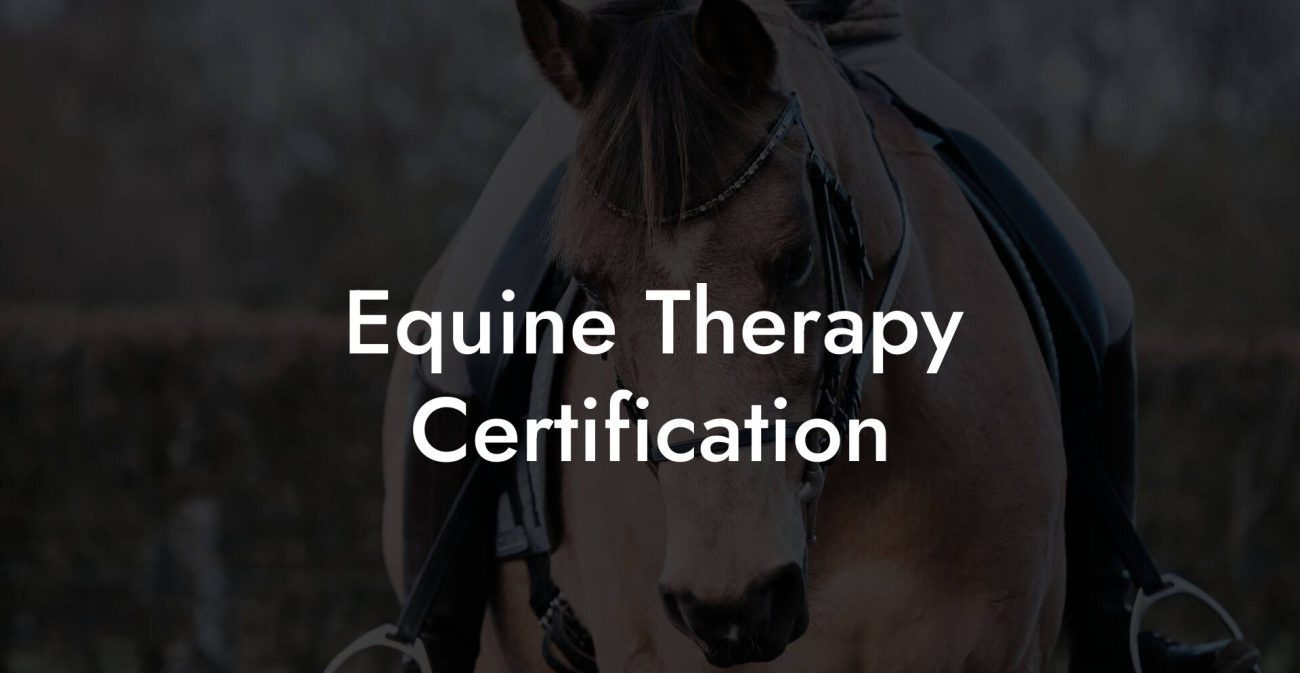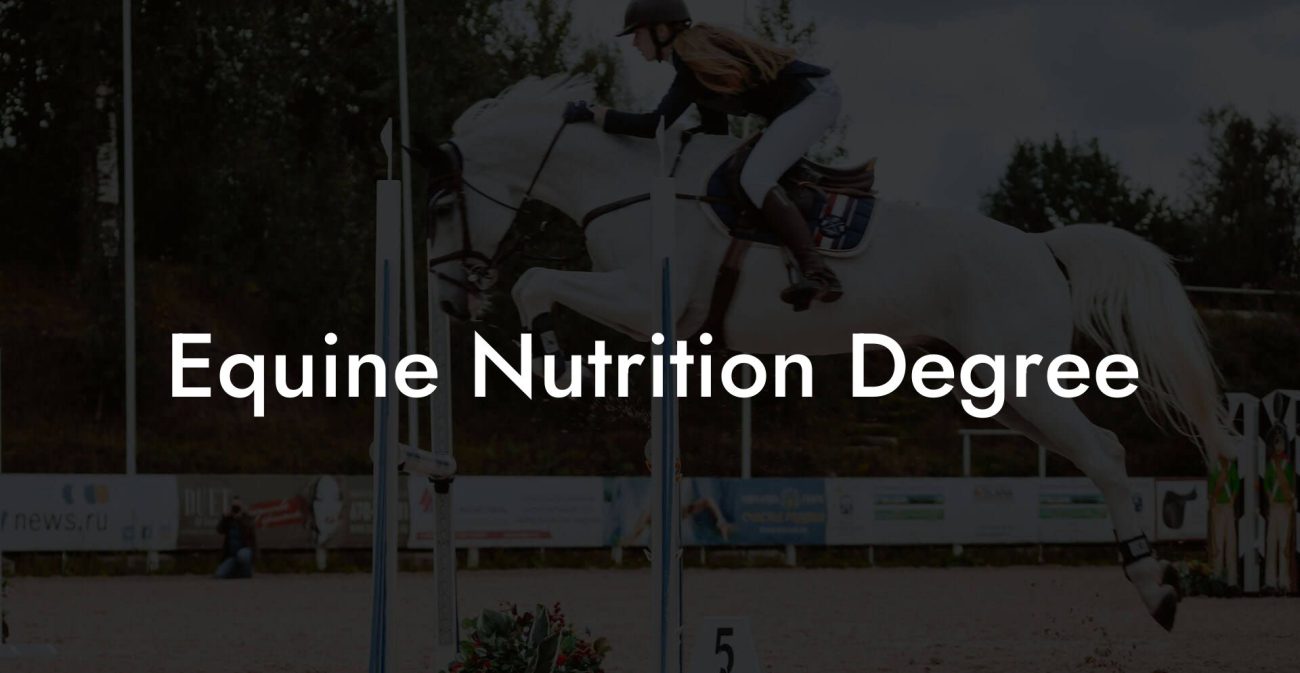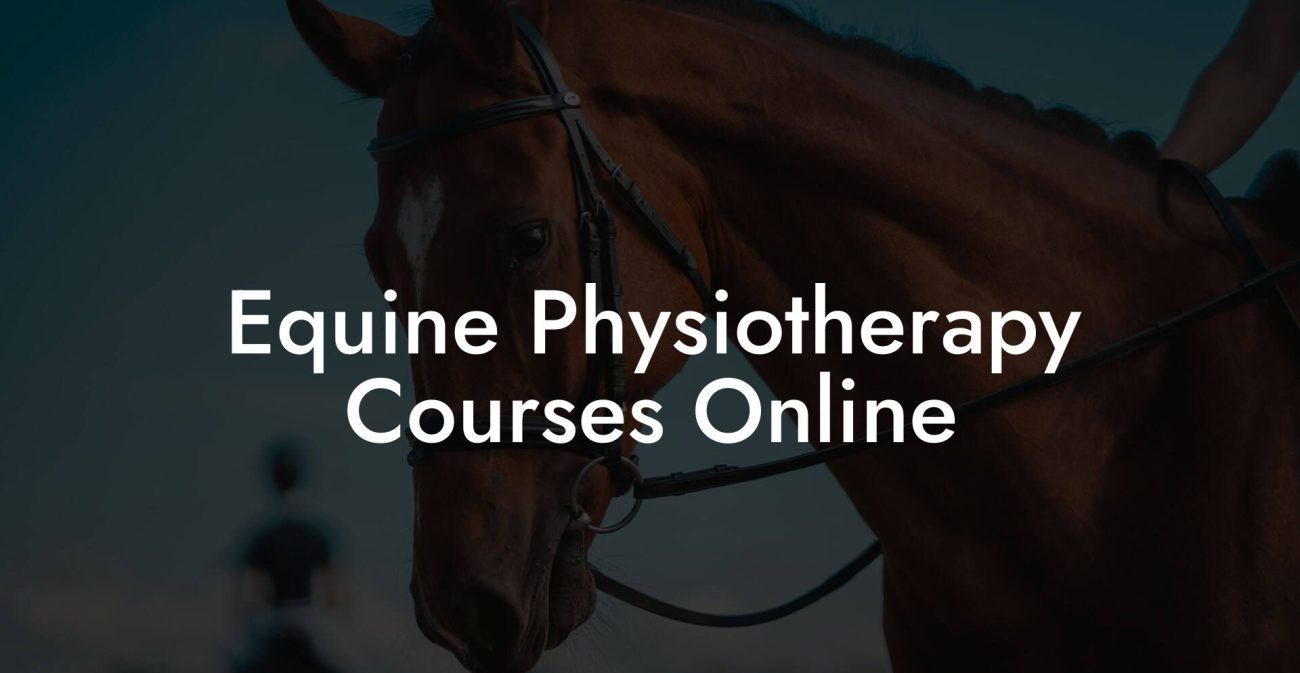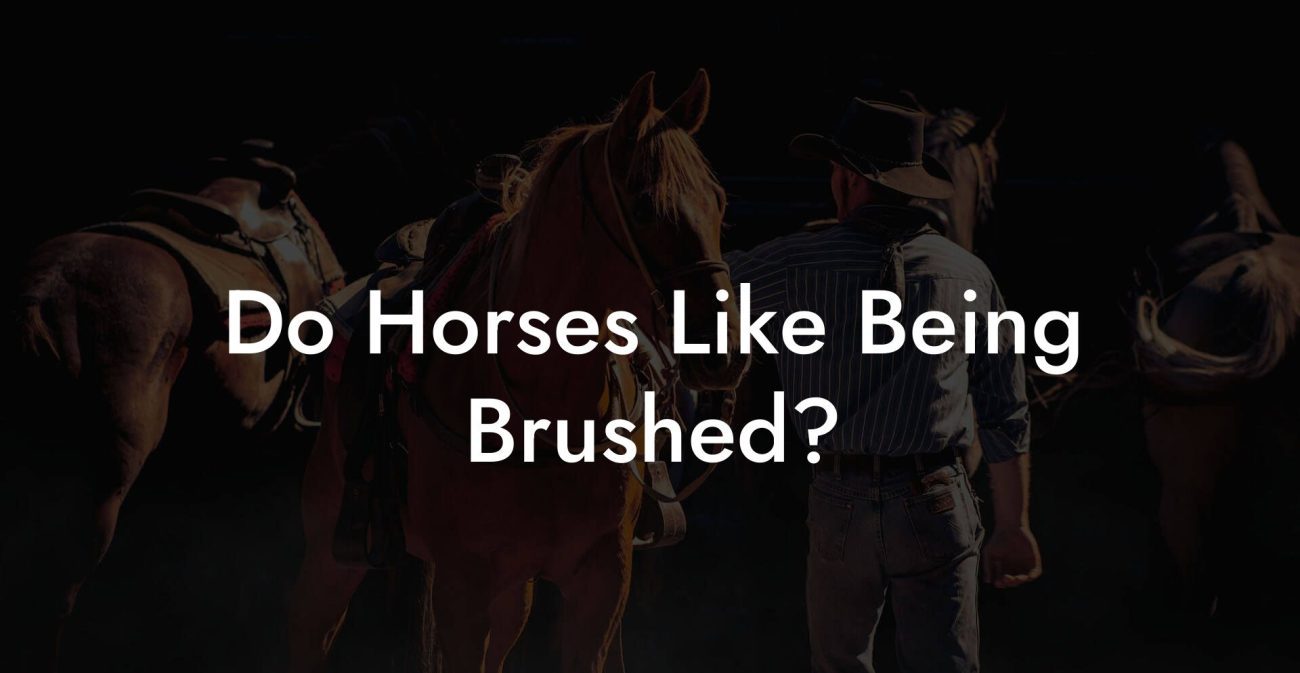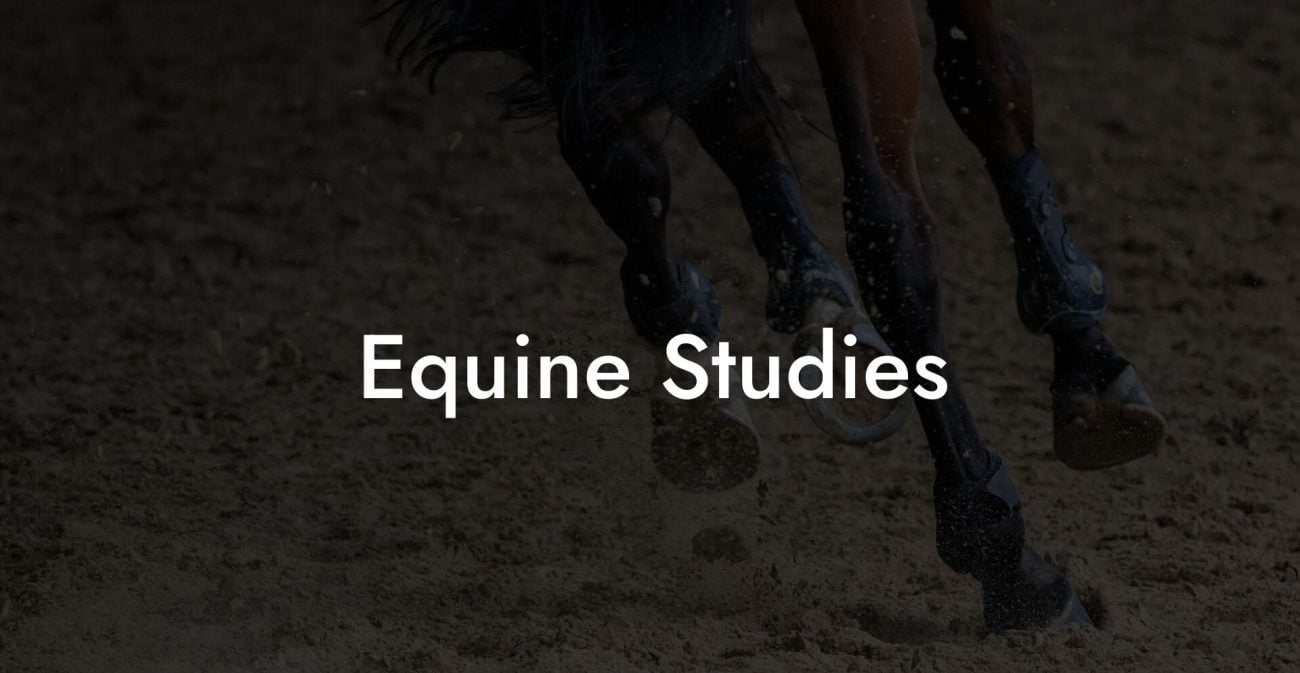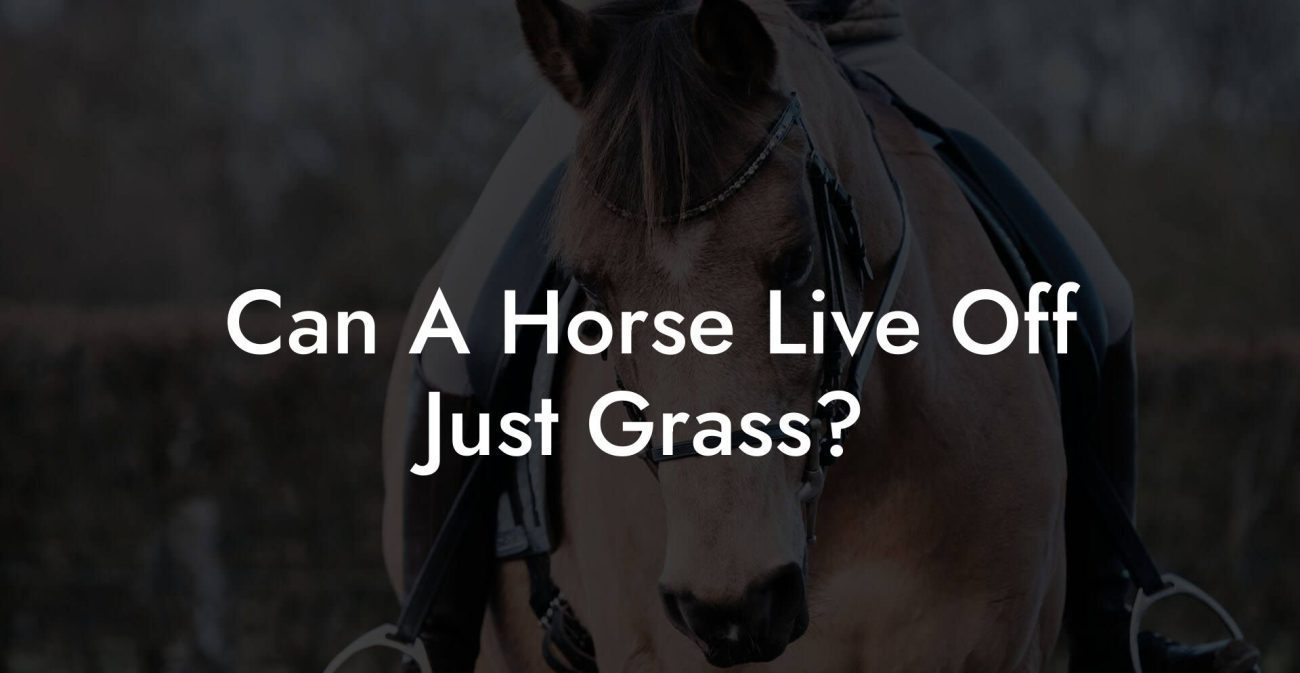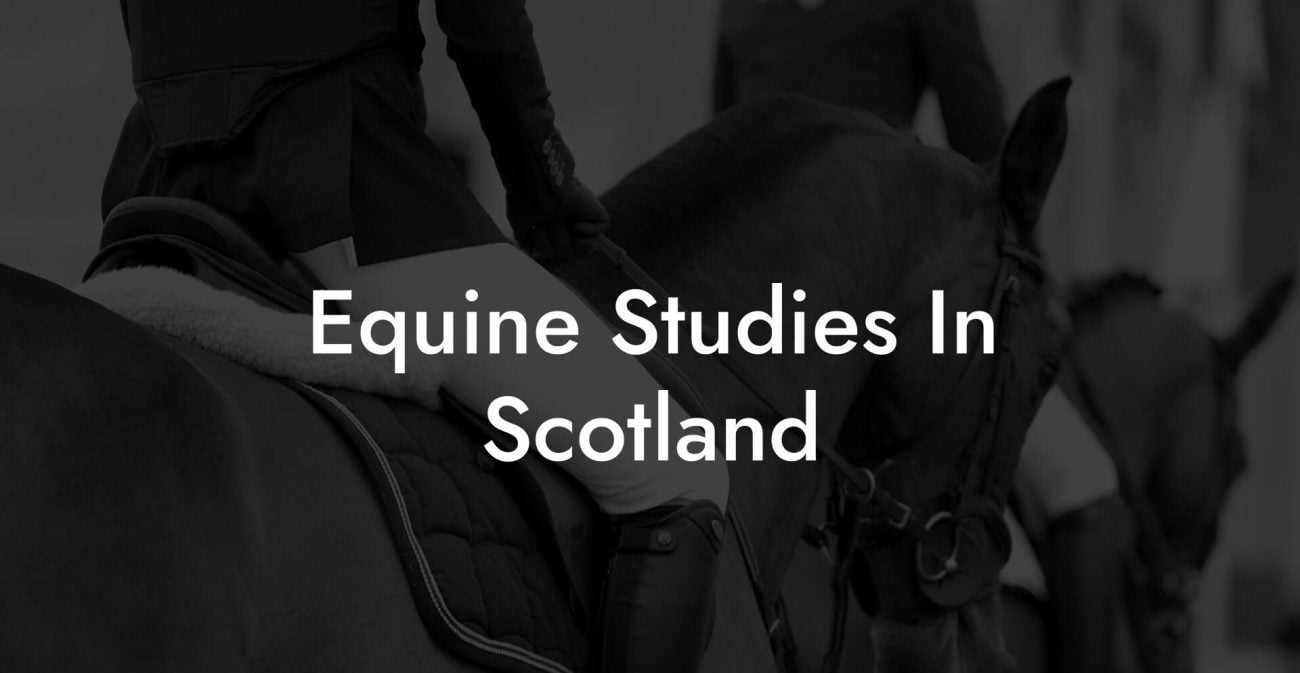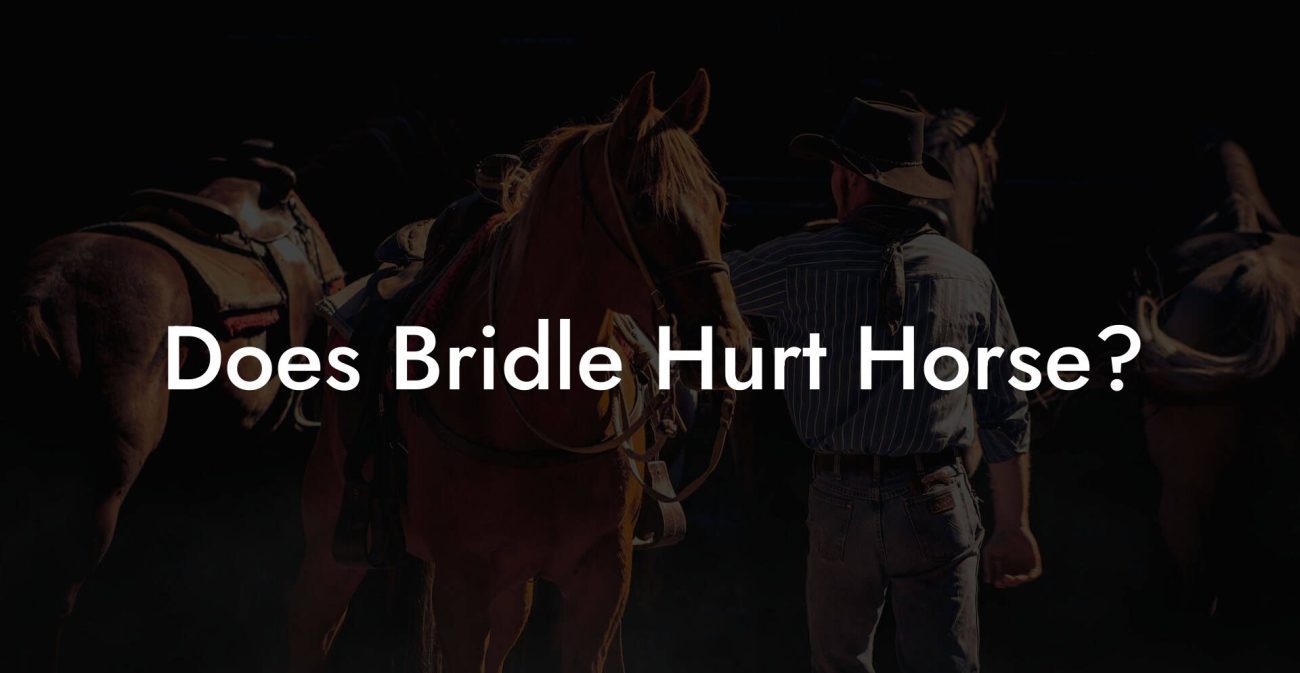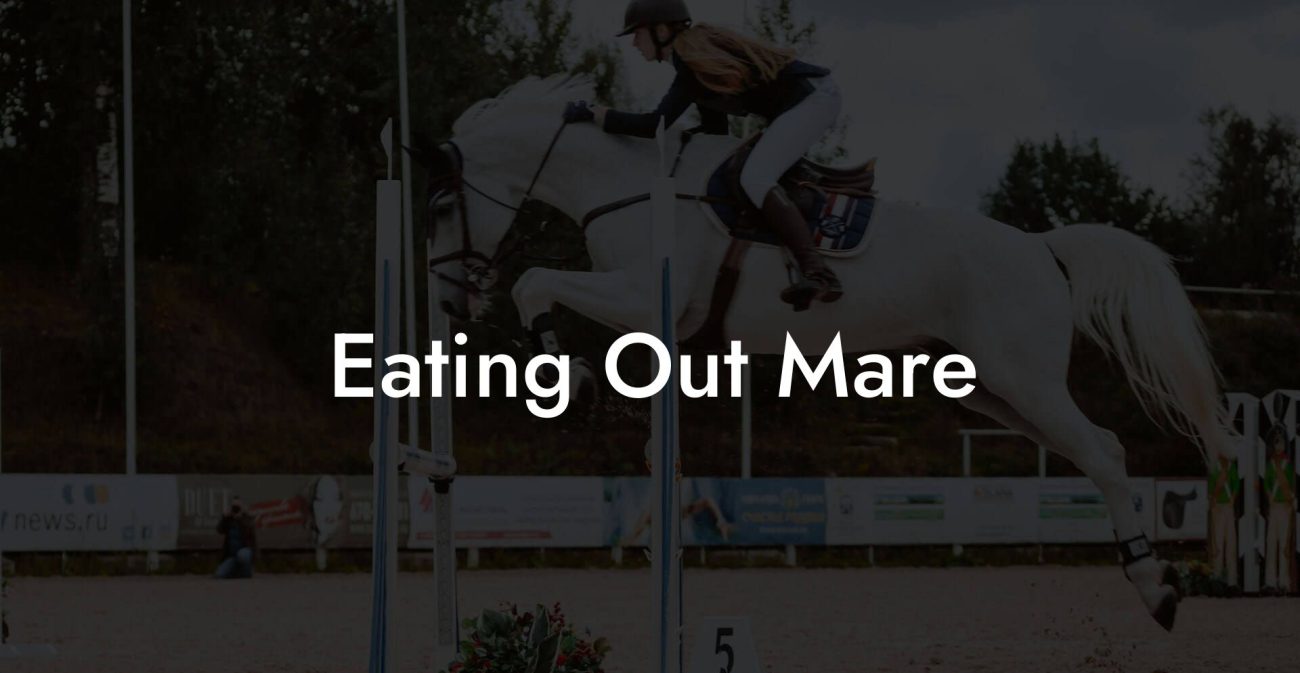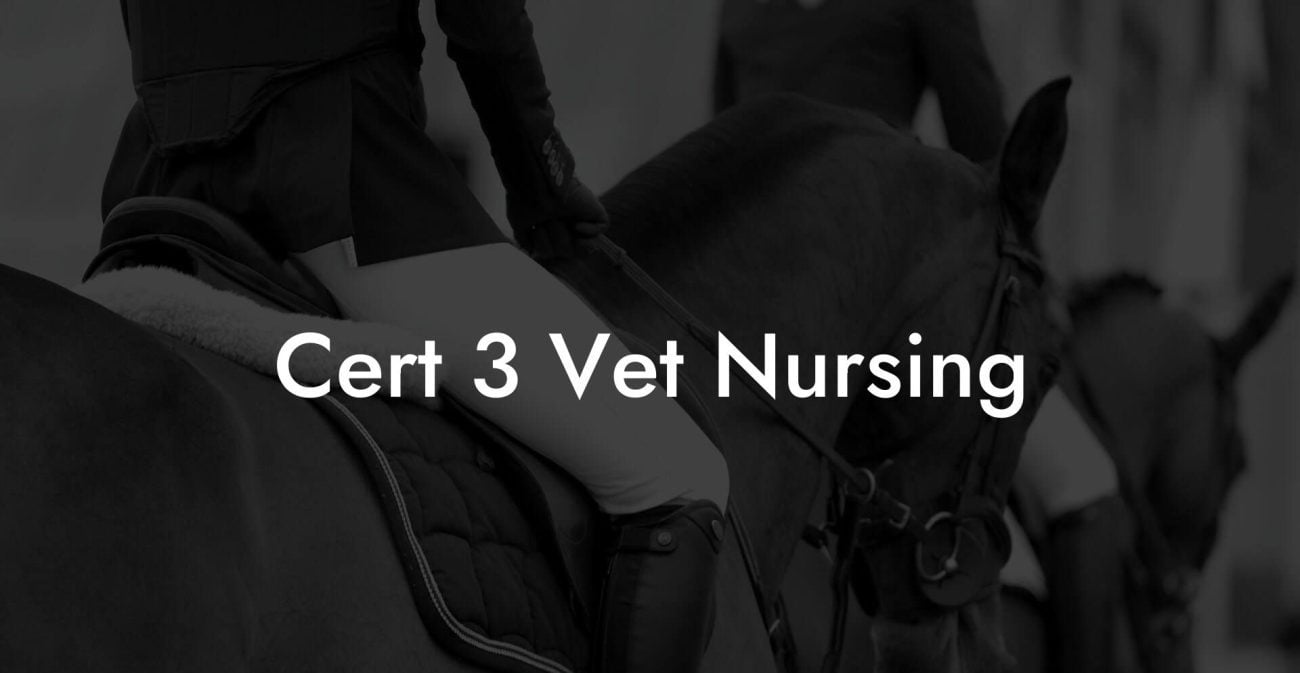Picture this: You and your majestic horse, both ready to break free from the mundane, embarking on a journey where precision meets passion. Lunging a horse isn’t just about letting your equine companion run in circles, it’s an art form, a safety training ritual, and a dynamic bonding experience all wrapped into one. Whether you’re a first-timer or a seasoned horse whisperer, this guide will share step-by-step instructions, insider tips, and a hearty dose of humor to help you master the lunge. Get ready to transform your training sessions into unforgettable, wind-in-your-hair adventures while ensuring your four-legged friend is safe, secure, and smiling (in horse terms, of course!).
Quick Links to Useful Sections
- Understanding the Basics: What is Lunging a Horse?
- The Benefits of Lunging: More Than Just a Circle Around You
- Preparing for the Lunge: Setting Up Your Training Arena
- Choosing the Right Location
- Essential Equipment Checklist
- Step-by-Step Guide: How to Lunge a Horse Safely and Effectively
- Step 1: Safety First
- Step 2: Establish Your Commands
- Step 3: Initiating the Lunge
- Step 4: Monitoring and Adjusting
- Step 5: Varying the Work
- Step 6: Wrapping Up
- Essential Techniques and Tips for Mastering the Lunge
- Correcting Your Horse with a Lunge Whip
- Body Position: Your Secret Weapon
- Maintaining Consistency in Commands
- Using Visual Cues
- Managing Energy and Intensity
- Common Mistakes and Myths in Lunging a Horse
- Myth 1: Lunging is Only for Problem Horses
- Mistake 1: Overusing the Lunge Whip
- Mistake 2: Inconsistent Commands
- Mistake 3: Insufficient Warm-Up
- Mistake 4: Neglecting Environment Safety
- Advanced Lunging Techniques: Taking It Up a Notch
- Incorporating Changes of Direction
- Using Figures of Eight
- Interval Training on the Lunge Line
- Integrating Obstacles
- Mindful Behavior and Bonding: The Heart of Lunging
- Case Studies: Real-Life Adventures in Lunging Success
- Case Study 1: From Skittish to Steady
- Case Study 2: The Transformation of a Champion
- Case Study 3: Building Trust and Teamwork
- Resources and Community Support: Your Next Steps
- Online Forums and Social Groups
- Workshops and Clinics
- Books, Blogs, and Video Tutorials
- Local Riding Clubs and Stables
- Lunge Safety and Horse Care: The Golden Rules
- Integrating Lunging Into a Broader Training Routine
- Lunge Equipment Maintenance: Keeping Your Gear in Top Shape
- Cleaning and Storage
- Inspection for Wear and Tear
- Upgrading Your Equipment
- Frequently Asked Questions About Lunging a Horse
- Embracing the Journey: Your Path to Mastering Lunging
Understanding the Basics: What is Lunging a Horse?
Lunging a horse is essentially training your horse to move in a large circle around you using a long line (often called a lunge line) and specialized tools like a lunge whip. It’s a versatile practice used for several purposes, warming up muscles, improving balance and responsiveness, or simply as a groundwork exercise. Think of it as a warm-up jog at the gym, but with way more style and a captivating four-legged friend.
The concept might sound simple: you stand in the center, and your horse trots, canters, or even gallops in a circle around you. But there’s a lot more nuance involved, body language, clear commands, and safety precautions merge to create a seamless communication bridge between you and your horse. And trust us: when you get it right, it’s like you’ve unlocked a secret level in the game of horse care.
From refining behavior and verifying fitness levels to easing tension and honing responsiveness, lunging is as beneficial for the horse as it is for the rider's training prowess. It’s a brilliant blend of discipline and fun, proving that learning doesn’t have to be boring.
The Benefits of Lunging: More Than Just a Circle Around You
Let’s be real, regular exercise is vital for both us and our animal pals. But lunging offers benefits that go far beyond the typical workout. Here’s why incorporating this technique into your training routine can be a game-changer:
- Enhances Communication: Lunging creates an environment where you and your horse learn to understand each other’s cues better. This mutual understanding makes everyday riding sessions smoother and less stressful.
- Improves Balance and Coordination: By moving in a circle, your horse is forced to engage muscles differently compared to straight-line work. This helps in building core stability and overall balance.
- Builds Trust and Respect: As you guide your horse from a distance, you foster trust. It learns that you’re the steady force holding the reins, even if you’re off to the side, and that peace follows your commands.
- Facilitates Warm-Ups and Cool-Downs: Just like how you wouldn’t skip stretching before a run, lunging helps your horse gradually warm up their muscles, preventing injuries and ensuring a proper cool-down.
- Enhances Flexibility and Response: With lunging, your horse practices turning and changing directions on command, leading to improved responsiveness both on the ground and under saddle.
In short, lunging transforms your training time into an engaging, multifaceted exercise that addresses fitness, communication, and behavioral training all at once.
Preparing for the Lunge: Setting Up Your Training Arena
Preparation is key. You wouldn’t rush into a marathon without warming up, right? The same rule applies to lunging. First, you need the right environment and equipment to make your lunge session both productive and safe.
Choosing the Right Location
Look for a flat, open space with a safe, non-slip surface. Whether it’s a dedicated lunge ring at your stable, a grassy field, or a well-paved arena, the area should be free of hazards like debris or uneven ground. For urban adventurers, some stables even have specialized indoor arenas designed precisely for lunging.
Essential Equipment Checklist
- Lunge Line: A long, sturdy rope or line, usually 30-40 feet, designed to give your horse enough space to move freely while keeping you safely at the center.
- Lunge Whip: Contrary to what some might think, this isn’t a weapon, it’s a tool to help guide and correct your horse’s movement if needed.
- Flash and Lunge Halter: These specialized halters are designed for lunging; they’re durable and comfortable, minimizing the risk of injury.
- Protective Equipment: Safety is paramount. Think of knee pads, gloves, and even reflective gear if you’re training during low-light conditions.
- Smartphone/Timer: Keeping track of training intervals and sessions can help with progress monitoring, using apps or a simple timer.
With the perfect stage and your training toolkit in hand, you’re all set to dive into the art of lunging.
Step-by-Step Guide: How to Lunge a Horse Safely and Effectively
Ready to lunge like a pro? Follow these steps to ensure your session is fun, safe, and productive.
Step 1: Safety First
Before starting, double-check your surroundings. Make sure there’s ample space and no distractions. Equip your gear properly and ensure your horse is comfortable in its lunge halter. Clear communication is key, so be calm and confident from the get-go.
Step 2: Establish Your Commands
Decide on a set of clear and concise commands for different movements. Common commands include “walk,” “trot,” “canter,” and “whoa.” Over time, your horse will begin to associate your voice with movement, so consistency matters!
Step 3: Initiating the Lunge
Stand firmly at the center of the circle. Hold the lunge line with both hands, making sure there’s enough slack for your horse to move freely but not so much that the line becomes tangled. With a gentle nudge and a clear command, invite your horse to start moving.
Step 4: Monitoring and Adjusting
As your horse starts circling, observe its movement. Is it maintaining a steady pace? Does it respond quickly to your commands? Use your body language and lunge whip (sparingly!) to guide and correct as needed. Remember, the goal is to maintain control while letting your horse enjoy the freedom of movement.
Step 5: Varying the Work
To keep things interesting (and to build a well-rounded workout), switch between different gaits. Try alternating between a relaxed walk, a brisk trot, and a controlled canter. This not only challenges your horse physically but also reinforces their responsiveness to your cues.
Step 6: Wrapping Up
Just like a great gym session, it’s important to cool down properly. Gradually slow your horse’s pace towards the end, returning to a calm walk to allow those muscles to relax. Remove the equipment carefully and give your horse a pat of appreciation for a job well done!
And there you have it, a comprehensive guide to lunging that combines safety, communication, and effective training techniques. Before you know it, lunging will become an essential, and even enjoyable, routine for you and your horse.
Essential Techniques and Tips for Mastering the Lunge
Let’s geek out on some advanced techniques and insider tips that will elevate your lunging sessions from “meh” to marvelous.
Correcting Your Horse with a Lunge Whip
The lunge whip is not a tool for punishment but rather an extension of your arm, a way to gently guide your horse back on track. Use it sparingly and only when necessary to correct direction or maintain rhythm. Always pair its use with a calm, friendly tone.
Body Position: Your Secret Weapon
Your stance speaks volumes! Stand straight, but relaxed, with your feet planted firmly and your hands held low and close to your body. Let your posture project confidence without intimidation. A slight lean towards the direction you wish your horse to move can work wonders.
Maintaining Consistency in Commands
One of the biggest mistakes new trainers make is inconsistency. Decide on your commands early on, and stick with them. Whether you choose to use specific words or incorporate a bit of your own slang (because why not, make it fun!), consistency builds trust and long-term responsiveness in your horse.
Using Visual Cues
Horses are incredibly perceptive to body language and non-verbal cues. Make use of gentle arm motions, nods, or even subtle shifts in your stance to signal changes in direction or pace. Over time, your horse will start mirroring these cues, enhancing the overall fluidity of the session.
Managing Energy and Intensity
Not every lunge session needs to be a high-octane thrill ride. Mix high-intensity periods with moments of calm to avoid overexertion. Recognize when your horse might be getting tired or overly excited, and adjust your commands accordingly. Think of it as interval training, a blend of bursts and cool-downs creates a balanced workout.
Remember, like all great skills, lunging takes practice. Embrace the learning curve with patience and humor, acknowledging that each session is a step towards building a more intuitive, connected relationship with your horse.
Common Mistakes and Myths in Lunging a Horse
Before you jump headfirst into a lunging session, let’s clear up some of the common pitfalls and misconceptions that abound in the equestrian community.
Myth 1: Lunging is Only for Problem Horses
Far from it! Lunging is an essential training technique that can benefit horses of all temperaments and skill levels. Whether your horse is exceptionally well-behaved or a bit more spirited, lunging is a tool that improves communication, balance, and overall fitness.
Mistake 1: Overusing the Lunge Whip
The lunge whip is not a magic wand. Overusing it can lead to confusion or even anxiety in your horse. Use it only to offer subtle corrections rather than as a constant companion. Your horse will appreciate a gentle approach over a rapid series of taps.
Mistake 2: Inconsistent Commands
Inconsistent commands or mixed messages can be a recipe for disaster. Whether it’s a command to trot, canter, or halt, make sure your cues are reliable. This consistency establishes trust, making the training process smoother and more enjoyable.
Mistake 3: Insufficient Warm-Up
Just like your workout routine, your horse’s muscles need a proper warm-up. Skipping the warm-up can lead to stiffness or injury over time. Start each session with a slow, relaxing walk to prime those muscles for the upcoming workout.
Mistake 4: Neglecting Environment Safety
A cluttered or uneven training area can pose serious hazards. Always check your surroundings before beginning. Make sure there’s adequate space, and be mindful of any obstacles that could interfere with your horse’s movement.
By understanding these common mistakes and debunking myths, you pave the way for a safer, more effective training experience, one where you and your horse are primed for success.
Advanced Lunging Techniques: Taking It Up a Notch
For those who’ve already mastered the basics and are itching for a new challenge, here are some advanced lunging techniques that will spark both your enthusiasm and your horse’s athletic prowess.
Incorporating Changes of Direction
Once you and your horse are comfortable with a steady circle, mix it up by incorporating changes of direction. Smooth, gradual transitions from clockwise to counterclockwise circling challenge your horse’s balance and responsiveness. Over time, this practice enhances overall agility.
Using Figures of Eight
The figure eight isn’t just a fun doodle, it’s an advanced exercise that promotes flexibility and improves directional control. By transitioning into a figure eight pattern, you encourage your horse to shift weight and change speeds in a fluid motion.
Interval Training on the Lunge Line
For a true challenge, consider incorporating interval training. Alternate between different gaits and intensities within a single session. This not only builds cardiovascular strength but also keeps your horse mentally engaged. Always monitor for signs of fatigue and tailor the intervals as needed.
Integrating Obstacles
If you have access to an arena set-up with obstacles, use them to simulate real-world challenges. Maneuvering around cones or poles requires your horse to adjust its stride and balance dynamically. It’s a fun and creative way to add layers to your training sessions.
Advanced lunging techniques add variety and complexity to your training, challenging both you and your horse to continually improve. As always, safety first, these exercises should only be attempted once you’re comfortable with the basics.
Mindful Behavior and Bonding: The Heart of Lunging
Beyond the physical benefits, lunging is one of the most effective ways to build a deep, trust-based relationship with your horse. Working together in a non-riding context allows your horse to focus on you, unburdened by the distractions of a full saddle ride.
When lunging, your voice, presence, and energy become the focal points of the session. A calm, assertive demeanor not only helps guide your horse but also inspires confidence in them. Over time, these sessions transform into bonding experiences where mutual respect and understanding are cultivated.
Whether it’s a quiet moment of shared silence or an exhilarating burst of cantering, lunging offers a space for connection. It’s where the rhythm of your voice meets the heartbeat of your horse, forging an unbreakable link that extends into every aspect of training and care.
Case Studies: Real-Life Adventures in Lunging Success
Nothing illustrates the power of lunging quite like real-life stories. Here are some tales from trainers and riders who have experienced transformative results with this technique:
Case Study 1: From Skittish to Steady
Bella, a notoriously skittish mare, used to bolt at the first sign of a loud noise. Her owner decided to incorporate regular lunging sessions into her routine. With a patient, consistent approach and plenty of positive reinforcement, Bella began to respond, exhibiting improved focus and reduced anxiety. Her steady progress not only boosted her confidence, but it also transformed her into a more reliable companion during riding exercises.
Case Study 2: The Transformation of a Champion
Duke, a spirited stallion known for his high energy levels, was struggling with direction and balance. After weeks of dedicated lunging, combined with interval training and advanced figures of eight, Duke’s overall athleticism saw a dramatic improvement. His trainer reported that Duke’s enhanced responsiveness translated into better performance in dressage and jumping sessions. The lunging routine truly became a vital part of his daily regimen.
Case Study 3: Building Trust and Teamwork
Clara, a young rider with a brand-new horse, faced the challenge of building trust quickly. Through daily lunging sessions characterized by gentle guidance and mindful communication, the horse not only learned to respond to commands but also developed a profound sense of trust in Clara’s leadership. Their journey is a testament to how lunging can solidify the foundation for a lifetime of teamwork.
These success stories remind us that lunging isn’t merely a training exercise, it’s a transformative experience that nurtures the physical, emotional, and mental connection between you and your horse.
Resources and Community Support: Your Next Steps
Embarking on the lunging journey is exciting, but you don’t need to go it alone. Here are some valuable resources and community hubs to help you continue growing your lunging expertise:
Online Forums and Social Groups
There are countless equestrian forums and social media groups dedicated to lunging and horse training. Platforms like Facebook, Instagram, and specialized equestrian communities are teeming with experienced trainers sharing tips, tutorials, and motivational stories. Joining these groups can offer support, answer your burning questions, and even provide local meetups for hands-on practice.
Workshops and Clinics
Look out for local workshops or equestrian clinics that focus on lunging. These sessions often include live demonstrations, hands-on practice, and Q&A segments with experienced trainers. Whether you’re a beginner or looking for advanced techniques, workshops can be incredibly enriching.
Books, Blogs, and Video Tutorials
The digital age is your friend. There is a wealth of literature and online content dedicated to lunging techniques and horse training. Follow blogs, subscribe to YouTube channels, or invest in a highly-rated book on the subject to deepen your understanding and continually refine your approach.
Local Riding Clubs and Stables
Joining a local riding club or stable can help you connect with fellow horse enthusiasts. These communities often organize group lunging sessions, trail rides, and competitions that can serve as both a learning environment and a supportive network.
Remember, every expert was once a beginner. Leverage these resources to expand your knowledge, refine your technique, and ultimately create a safer, more rewarding training experience for you and your horse.
Lunge Safety and Horse Care: The Golden Rules
While lunging is a fantastic and versatile training tool, it’s important to never lose sight of safety, both your own and your horse’s. Here are some golden rules to keep your sessions safe and impactful.
- Always Check Your Gear: Before each session, inspect your lunge line, halter, and whip for any signs of wear or damage. A small tear or fray can quickly turn a fun session into a hazardous one.
- Know Your Limits: Recognize that lunging, like any physical activity, has its limits. Monitor your horse’s energy levels and avoid pushing too hard, too soon. If your horse starts showing signs of fatigue or distress, it’s time to slow down and cool off.
- Maintain a Calm Demeanor: Your horse is extremely sensitive to your energy. Remaining calm, even in challenging moments, can prevent unnecessary stress and encourage cooperation.
- Keep Your Environment Clear: Ensure that your lunging area is free from obstacles, distractions, and hazards. A well-maintained, clear arena minimizes the risk of accidents.
- Regular Check-Ins: Regularly consult with a vet or an equine fitness specialist, especially if you’re introducing new techniques or increasing the intensity of your sessions. Professional guidance can be invaluable in long-term horse care.
Abiding by these safety rules isn’t just about avoiding mishaps, it’s about respecting your horse’s well-being and ensuring that every session is building toward a stronger, more harmonious partnership.
Integrating Lunging Into a Broader Training Routine
Lunging is a stellar training technique on its own, but its benefits multiply when integrated into a comprehensive training plan. Many riders combine lunging with groundwork exercises, riding lessons, and even advanced dressage or jumping training sessions.
Use lunging as a warm-up, a break from saddle work, or even as a cool-down activity after a strenuous ride. This multi-faceted approach ensures that your horse’s muscles stay flexible, their mind remains alert, and your bond continues to strengthen over time.
Establish a balanced routine by carving out dedicated lunging sessions in your weekly training schedule. Whether it’s a brief 15-minute session to kickstart the day or a more extended practice on weekends, consistency is the key to reaping the full benefits of this training technique.
Lunge Equipment Maintenance: Keeping Your Gear in Top Shape
Once you’ve invested in high-quality lunging equipment, the next step is ensuring it stays in great condition. A well-maintained lunge line, halter, and whip can dramatically influence the effectiveness and safety of your sessions.
Cleaning and Storage
After each session, wipe down your equipment to remove sweat, dirt, and any debris that might have accumulated. Store your gear in a dry, protected area away from direct sunlight. Regular cleaning not only extends the lifespan of your equipment but also prevents any allergens that could irritate your horse.
Inspection for Wear and Tear
Schedule a periodic inspection, once a month is ideal. Look for fraying in the lunge line, weak stitching on the halter, or any imbalance in the whip. Early detection of damage can prevent accidents and ensure that every session is safe.
Upgrading Your Equipment
Don’t be afraid to upgrade your gear if it no longer meets your needs. Technology and design improvements in equine equipment happen frequently, and investing in a better set can enhance both performance and safety. With the right maintenance habits, your gear will serve you well on your long equestrian journey.
By treating your equipment with care, you reinforce the message that safety and excellence go hand in hand, a philosophy that benefits both you and your horse.
Frequently Asked Questions About Lunging a Horse
The equestrian community is buzzing with questions, and we’re here to help! Dive into these common queries to further polish your lunging know-how.
1. What exactly is lunging a horse?
Lunging a horse involves training your horse to move in a circle around you using a long line (lunge line) while you guide them through voice commands and subtle physical cues. It’s a fundamental training tool to improve balance, communication, and overall fitness.
2. Is lunging safe for every horse?
Generally, lunging is safe for most horses when done correctly and under supervision. However, it’s important to consider your horse’s fitness level, temperament, and any existing conditions. Consult with a professional if you’re unsure.
3. How often should I lunge my horse?
The frequency of lunging sessions depends on your training routine and your horse’s needs. Many riders enjoy 2-3 sessions per week, though shorter, more frequent warm-ups are also beneficial.
4. What are the common mistakes to avoid?
Common mistakes include inconsistent commands, overuse of the lunge whip, neglecting proper warm-up and cool-down routines, and not ensuring the training area is safe and free of obstacles.
5. Can lunging help with problematic behaviors?
Absolutely! Lunging can help reduce behavioral issues by improving communication and increasing your horse’s focus. It’s particularly useful for horses that need to build trust and responsiveness before moving on to ridden work.
6. Should I use a clip-on noseband or other accessories?
Accessories like flash nosebands can enhance communication and comfort, but true choice should be based on your horse’s comfort and response. If you’re new to lunging, consult with your trainer about which accessories might work best.
7. What are the best practices for using a lunge whip?
Use the lunge whip only as a subtle guiding tool rather than an instrument of punishment. Aim for gentle corrections and combine its use with clear vocal cues and consistent body language.
8. How can I tell if my horse is responding well during lunging?
Look for signs of relaxation, steady movement, and responsiveness to your verbal commands. If your horse is straining or appears uncomfortable, take a break and adjust your technique.
Embracing the Journey: Your Path to Mastering Lunging
At its core, lunging a horse is about creating a partnership built on trust, communication, and mutual respect. Every session is an opportunity to deepen that bond while enhancing your horse’s agility, balance, and training responsiveness.
As you integrate the techniques, tips, and safety protocols outlined here, remember that practice makes perfect. Don’t be discouraged by a few stumbles along the way, each misstep is just a stepping stone toward mastery. With patience, persistence, and a touch of humor, you’ll soon find that your lunging sessions are not only effective training tools but also cherished moments of connection.
So take a deep breath, load up on enthusiasm, and step confidently into your next lunging session. Embrace the journey, celebrate your progress, and enjoy every stride along the way. Your horse, and your inner trainer, will thank you.
Gear up, circle around, and lunge with passion. The arena is yours, now go show the world your unique style of equestrian excellence.

